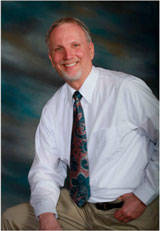When I tread the corridors and walkways of Green River College, I constantly pass women wearing hijabs (Muslim headscarves). Are these women Arabs? That depends. They may be from India, or Iraq or Norway. What exactly is an Arab, anyway?
According to a Stratfor article by Anisa Mehdi entitled, “Finding the Arab World,” the most accepted definition of an Arab is, “one who speaks Arabic, a Semitic language related to Hebrew.” There are 12 Arab tribes that we find in the Bible who are the traditional descendants of Ishmael, the son of the patriarch Abraham, according to Genesis 25:12.
Arab Islam arose in the Saudi Arabia peninsula in the early 600s AD and spread rapidly, creating an enormous Arab-Muslim empire that reached from Pakistan and India in the east and from North Africa to the southern gates of France in the west.
Eventually that Arab empire was taken over by Persian-Muslims, then Turkish-Muslims, who survived until the end of World War I.
Mehdi suggests that Europe’s rise to world dominance began from the time of the Crusades in the 1100s and 1200s when Christian knights and European peasants attacked an unsuspecting Arab world.
Until the 1200s, the Arab World was the master of mathematics (Algebra is an Arabic word. Our numbering system, called the Hindu-Arabic System, comes to us from the Arab World). Partly because of this numbering system, Arabs became the leaders in the study of science. The West owes a great deal to Arabs who preserved the knowledge of the ancient classical world and passed it on to a backward and ignorant European continent.
Since that time, the Arab World has struggled to keep up and they know it. They are frustrated by their fall from prominence. The rise of ISIS is a manifestation of that reality.
Arabs have been stung by western domination since the 1500s. Before that time, Arab merchants and middlemen communicated the knowledge and exported the goods of Asia to the Europeans. After that time, Europe looked west to the New World in North America and found ways to bypass the Arabs as they found alternate ways to the riches of India and China.
Mehdi asks: “Today, Europeans live in Europe, Asians live in Asia, but do Arabs live in Arabia?” The Arab World today refers to the 22 nations found from North Africa to the Arabian Peninsula: Morocco on the Atlantic and the United Arab Emirates on the Persian Gulf.
But are all the people of these countries Muslim? By no means. Most Arabs are Muslims, but there are 6 million Coptic Christians living in Egypt. In those Arab-speaking nations there are Christians, Jews, Mandaeans and Druze, all who are non-Muslim.
Mehdi notes that because of dialects and cultural influences, her Arabic-speaking father from Iraq often has to revert to speaking English to his Arabic-speaking Moroccan friends in order to carry on an intelligible conversation.
From 1958 to 1961, Egyptian president Gamal Adel Nasser tried to create a Pan-Arabic state called the United Arab Republic, linking Egypt and Syria. It didn’t survive Nasser’s domineering leadership. His dream of Arab unity died with him.
Since that time the Arab world has become more diverse and divided.
“Forty years later (after the death of Nasser) in Tunisia, a fed-up fruit vendor set himself on fire when authorities forbade him to sell his goods. Was he an Arab, a Tunisian or simply a man that needed to feed his family?” (Mehdi)
This tragedy began what has been called, “the Arab Spring,” a series of violent upheavals that are still shaking the Middle East and the world. One has only to look at the Syrian and Iraqi conflicts to observe Arabs seeking to regain some of their lost grandeur.
The Arab World is not the monolith it once was. Mehdi sums up this conclusion by her statement: “At a moment in history when nativism, populism, ethnocentrism and xenophobia are on the rise in “the West” (another construct that may be worth examining in the future), and civil wars, conflicts between neighboring nations and splintering religious alliances are on the rise in the Middle East, it may be useful to rethink this label.”
The labels we use tend to blind us to greater truths. Perhaps we should rethink our outmoded definitions of the Arab World and see it for what it really is.


